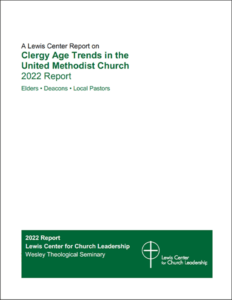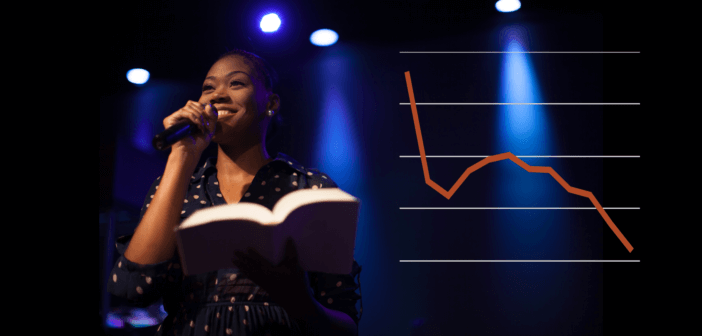Lovett H. Weems Jr. reports that the declining number of young elders in the United Methodist Church has accelerated while the number of young deacons increased. The number of young clergy continues to be a cause for concern.
For seventeen years, the Lewis Center for Church Leadership has issued annual reports on clergy age trends in the United Methodist Church. The reports emerged originally from a perceived absence of young clergy compared to previous eras. Working in partnership with Wespath Benefits and Investments, the denominational pension agency, the Lewis Center provides yearly statistics on clergy of all ages. Currently the number of young clergy — particularly young elders — continues to cause concern.
A consistent decline in young elders since 2016 has erased modest gains in the previous decade.
Several conferences gave special attention to encouraging younger clergy. There was some improvement in the number of young elders (younger than 35), though not every year. From the historic low of 850 elders younger than 35 in 2005, the number had climbed to 1,003 in 2016, at which time the consistent decline resumed.
The number of young elders has hit a new record low.
Since 2019, the decline in numbers of young elders has accelerated. The number of young elders in 2021 hit a new historic low of 742. The trend of steep losses continues in 2022 with a loss of another 94 and thus another record low number of young elders at 648. The losses in 2022 were comparable for men and women based on the proportion of each among young elders. The larger declines that began in 2019 now represent the loss of 301 young elders, a 32 percent decline.
In 1978, 10 years after the formation of the United Methodist Church, 23 percent of active elders were younger than 35. By 1985, the proportion of young elders was still more than 15 percent. Young elders today represent about 6 percent of all active elders, a group that itself continues to decline annually.
The North Texas Conference for the second consecutive year had the highest percentage of young elders at 11.4 percent. For the first time, all five U.S. jurisdictions were represented in the top ten conferences with the highest percentages of young elders. The largest total number of young elders (32) is in the Texas and Western North Carolina conferences, followed by Virginia (31).
Young deacons have increased slightly in the past year while young licensed local pastors have declined considerably.
A more positive development is that the number of under-35 deacons increased by 5 in 2022 to 100. The percentage of young deacons among all active deacons remained at 11 percent in 2022. The percentage of young deacons remains above that of young elders and local pastors.
The number of under-35 local pastors declined to 561 in 2022 from 621 in 2021. The percentage of young local pastors among all active local pastors declined to 8 percent in 2022 from 9 percent in 2021.
The full report, Clergy Age Trends in the United Methodist Church, 1985–2022, covers the latest figures and trends for elders, deacons, and local pastors by annual conference. Download the full report.
 Related Resources
Related Resources
- Clergy Age Trends in the United Methodist Church, 1985-2022
- What’s Keeping Younger People from Ordained Ministry in the United Methodist Church by Ann A. Michel
- “A Call to Overinvest in the Young,” a Leading Ideas Talks podcast episode featuring Janice Huie






